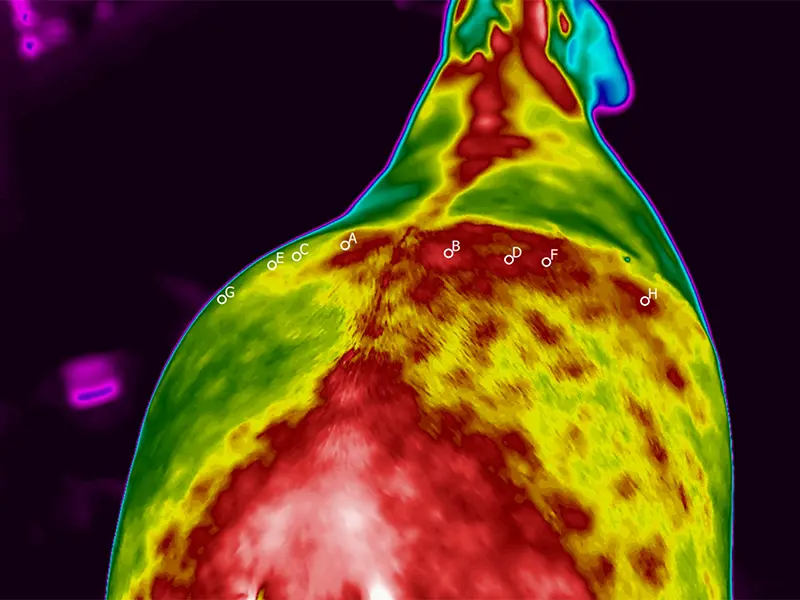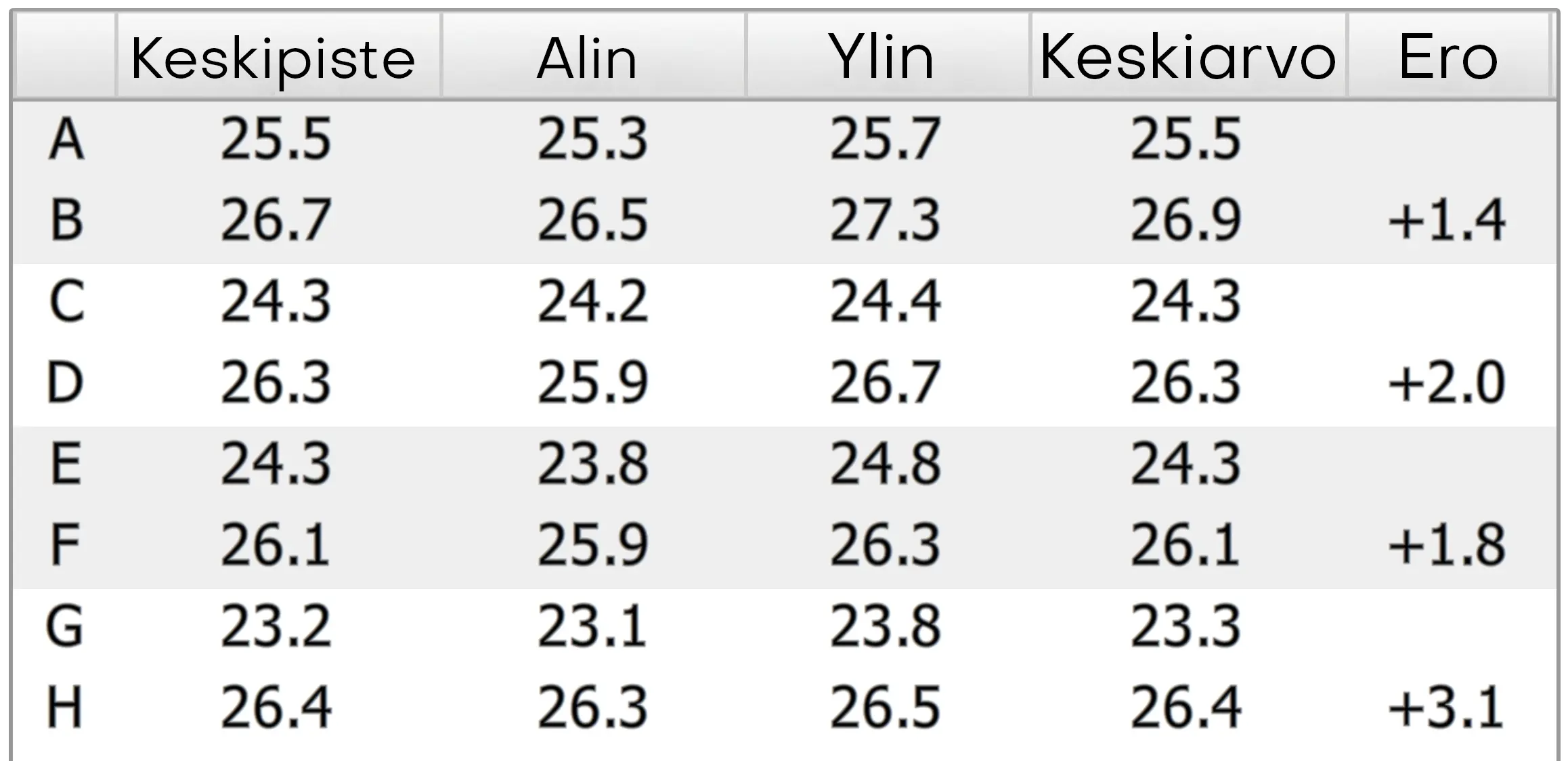The horse is a professionally ridden school horse that competes actively. The horse was reluctant, there were challenges with the canter and the horse calved. The horse’s hind legs had been treated, but the situation remained unchanged.
The resolution of the conflict behaviour started with checking the fit of the saddle using thermal imaging. The thermal images and visual observations were summarised to show that the saddle used was too narrow and that it was backward weighted, which apparently contributed to the horse being diagnosed with an SI problem at the end of the racing season. Based on the thermal images, the owner asked the vet to have the horse’s SI joint ultrasounded.


Thermal differences to the right of the buttock (B, D, F, H). Thermal differences of 2.0 degrees and above can be considered diagnostically significant.
This injury is often chronic, easily relapsed and difficult to treat. It is often found in sport horses, where a rapid recovery back to working condition is important to the owner. Early diagnosis of the injury is important, so that treatments can achieve better results.
In this client’s case, thermal imaging made the invisible visible and enabled timely treatment. The SI problem was properly treated and the horse won the regional championship for young horses in his region.
Discover our new, portable solution. Compact and easy to use, the IRT-384 Tablet allows you to conveniently take and analyze thermal images on a single device - wherever you go.
Learn more and get yours
Thermidas VET
Polttimonkatu 4
33210 Tampere, Finland